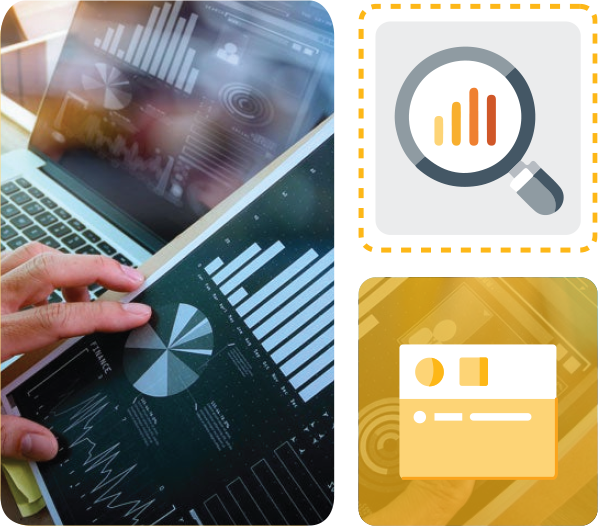Leadership Development
Develop Leaders for Immediate Impact and Lasting Growth
Leadership is the key to driving results—but building great leaders takes more than training. It’s about the importance of creating meaningful, lasting change that aligns with your business strategy and delivers measurable impact.
Our leadership training solutions accelerate performance to deliver better outcomes today while engaging leaders across all levels to build a stronger future. Through personalized insights and proven tools, leaders quickly develop the skills to drive results and create lasting value for your organization.
We understand the stakes are high. That’s why we’re by your side, helping you cultivate growth in your leaders, their teams, and your business. At DDI, it’s not just about learning. It’s about changing behavior to achieve better business results.
BY THE NUMBERS
Leaders Developed. Results Delivered.
See how DDI's leadership development programs deliver a quantifiable impact on business outcomes, employee retention, and productivity.
424 RETURN ON INVESTMENT
DDI’s Leadership Development Subscription delivered 424% ROI based on a composite organization representative of interviewed clients.
The Total Economic Impact™ of a DDI Subscription, August 2024
88 MOTIVATED TO APPLY NEW SKILLS
After DDI programs, 88% of participants were more motivated to apply new skills.
DDI Impact Evaluation Data
12 IMPROVED RETENTION
With a DDI Subscription, employee retention improved by 12% due to more effective leadership.
The Total Economic Impact™ of a DDI Subscription, August 2024
95 VALUABLE INVESTMENT
95% of HR team members said the DDI program was a valuable investment.
DDI Impact Evaluation Data
Develop Leaders Differently
We base our approach to development on more than 50 years of science and research on the practice of leadership.
Our experiences are designed to meet leaders where they are, create a personal connection, and focus on the areas of highest impact. We meet these goals by following five high-impact design principles to ensure that all of our experiences are: Relevant. Personalized. Immersive. Trusted. And deeply human.
The result? Better leaders who get better business results.
Our leadership development program has supercharged our transition towards becoming a learning organization, enabling our leaders to experience the value of learning whilst simultaneously uplifting our leadership capability. Win-win.
Laura Lane Global Head of Talent EdwardsRelated Client Story
How Edwards Develops Top Talent to Support Rapid Business Growth
8 min
Trusted Content for All Levels of Leaders
According to the Global Leadership Forecast 2025, when companies develop leaders across all levels, they are 1.7X more likely to be among the top 10 percent of financially performing organizations in their industry. That's the power of growing leaders at every stage.
Our leadership development solutions are anchored in a deep understanding of what leaders need to succeed and deliver results at every level. Engage aspiring leaders, first-time managers, or future executives with our high-impact, award-winning content available in multiple formats. Whether leaders prefer virtual or in-person learning, our live sessions foster connection and growth. For those short on time, curated playlists of microlearning offer quick skill-building opportunities.
Best of all, leaders can apply what they’ve learned immediately with practical tools designed for real-world impact.
Start with courses
From insights to action
Personalize Development with Deep Insights
We know that leadership training should be meaningful, relevant, and focused. After all, leaders need solutions that maximize their time and impact. Insights from assessments spark powerful “a-ha” moments, helping leaders understand their strengths, identify gaps, and take clear, actionable next steps to improve and grow.
But it’s not just about individual insights. Objective data across leaders and teams helps you design targeted leadership programs that close critical skill gaps and fast-track performance where it matters most to your business.
I personally trained nearly 1,000 managers from all over…during this time, I have been stopped in malls, airports, hotels, and in the street by scores of past participants and thanked for DDI-inspired, life-changing experiences.
DDI-certified facilitator in the professional services industry
Deliver High-Impact Experiences
The right facilitator can make all the difference in the success of your leadership program. That’s why many of our clients rely on DDI's expert facilitators. With proven experience and a focus on results, our team connects your business strategy to the leadership skills your organization needs to succeed.
Certifying your own trainers to deliver DDI content is a great way to ensure consistency and familiarity within your team. But working with DDI’s expert facilitators can elevate your leadership programs even further. With their specialized expertise and fresh, impartial perspective, they bring energy and impact to every session—helping to drive the outcomes that matter most to your business. Curious about what makes our facilitators stand out?

DDI is an amazing partner who helps us think outside the box to strategically help our leaders. I've never worked with a vendor who has provided such proactive support in alignment with our organization's goals.
Talent development manager at a top-tier insurance firm
Track the Results that Matter
With limited resources and growing pressure to demonstrate results, it’s essential to show that your leadership development efforts drive real business performance.
We make it easy to measure and showcase the outcomes that matter most to you and your stakeholders. Ready-to-use tools and real-time dashboards allow you to confidently evaluate and communicate your program's success.

Have a Question?
Frequently Asked Questions About Leadership Development
-
What is DDI's approach to leadership development?
DDI's approach to leadership development begins with the end in mind, aligning development programs directly with your business strategy and performance goals. We create meaningful, lasting behavior change through multi-modal solutions that go beyond traditional training, delivering personalized insights and high-impact experiences that help leaders drive measurable results. Our evidence-based approach draws on more than 50 years of research and practice in developing exceptional leaders who create lasting value for organizations.
-
What makes DDI's leadership development unique?
DDI stands apart by offering comprehensive development solutions for every leadership level, from frontline to C-suite, with award-winning content specifically designed for each level's unique challenges. Our approach combines deep assessment insights with personalized development experiences, ensuring leaders build practical skills they can apply to real business challenges today while preparing for future roles. Rather than simple knowledge transfer, we deliver measurable ROI by aligning development with business priorities and creating lasting behavior change that drives organizational success.
-
How can leadership development support my organization?
Leadership development is essential to achieving your business goals and shaping a successful future for your organization. With 83% of HR professionals predicting increased demands for new leadership capabilities, investing in development ensures your leaders can both drive current performance and build the workforce of tomorrow. Through effective leadership development, you create the foundation for sustainable growth, enhanced employee engagement, and long-term business success.
-
What is the right leadership development approach for my organization?
The right leadership development approach aligns precisely with your organization's strategic priorities and addresses the specific challenges facing your leaders today. When you work with us, a dedicated DDI Strategic Learning Team partners with you to assess your current leadership capabilities, define desired outcomes, and design a development strategy that delivers measurable results. As your business strategy evolves, we help you adapt your development approach to ensure continued success.